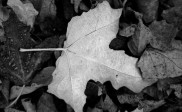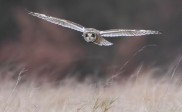Mastering Macro Photography
Macro photography is described as taking shots of tiny subjects such as insects, water droplets, and the like. Photography purists would say that ‘true macro’ refers to the magnification of the subjects into life-sized images in the film plane or digital sensor, which has little to do with how close the camera is to the subjects.
Close-Up Photography as Macro Photography
For ‘true macro’ shots you would need a dedicated macro lens which can capture image magnification at 1:1 ratio. However, macro lenses are quite costly and not everyone will have this specialty lens as part of their camera gear. It doesn’t mean that you can no longer take gorgeous macro-like pictures with your point-and-shoot or DSLR that has a standard lens. For this article, the term ‘macro photography’ will be used to include close-up photography, where you make use of the macro function of your camera to take extreme close-up photos of subjects both big and small.

Photo by minds-eye
One of the first things you will notice as you take macro pictures is that the images you capture show such large amounts of detail that you normally would not notice. For example, an ordinary bug such as this dragonfly (which you might usually ignore) appears ethereal and delicate up close, now that its iridescent wings and spindly legs are more obvious.
Macro Photography Presents Minute Details of Subjects
Macro photography brings to our attention all the tiny details that are easily overlooked because they are so small. All kinds of fascinating lines, shapes, colors, patterns, forms and textures suddenly appear and are appreciated for their beauty, details that would have always remained hidden if you had not taken the shot. While this photo of a mixture of paint blobs may not appear worth looking at from afar, with the beauty that macro photography always seems to extract, this image is stunning with its display of colors and textures.

Photo by tanakawho
Nature is a Favorite Subject in Macro Photography
If you were to search online for macro images, you will notice that most of the photos that are presented are of nature. Insects and creepy crawlies, leaves and flowers are just a few of the small but greatly appealing subjects used in macro photography. Flowers and bugs are often colorful and full of intricate details that make them fun and rewarding subjects to shoot.
In this close-up image of a hibiscus, you can see just how bright, silky and wrinkly the petals are, as well how they are dusted with pollen from the pistil in the center.

Photo by Balaji.B
Practice the Basic Compositional Rules Even with Macro Photography
Just because you are taking close-up photos or are using your macro lens to magnify a minuscule subject doesn’t mean that you can now disregard the basic rules of composition. The Rule of Thirds, balance, leading lines, and perspective still apply, and will certainly add visual impact to your images. Also, don’t be afraid to experiment with macro photography during post-processing.
This image of an eye is striking, not just because it beautifully captures the details of the eyelashes, but also because of the use of selective desaturation enhances the blue color and patterns found in the iris.

Photo by wheels3217
Whether you have a macro lens and use it to magnify small subjects into life-sized images, or you are taking advantage of your camera’s macro mode by doing close-up shots, the outcome should always be what you intended. Compose deliberately, crop and edit until you are completely satisfied with the results.

Photo by kaibara87



